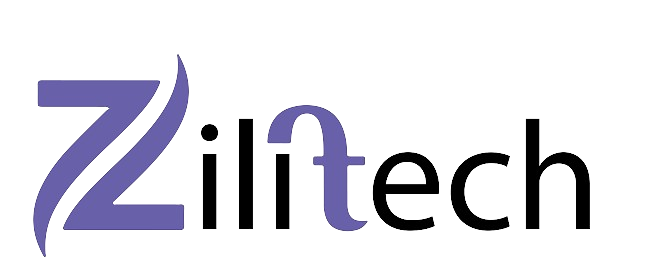Introduction
In today’s fast-paced world, ensuring the safety and security of students during their commute to and from school is paramount. With the rise of technology, schools are increasingly turning to innovative solutions to keep track of their students. Enter the student transport tracking system—a game-changer in the realm of student safety and school efficiency.
What is a Student Transport Tracking System?
Definition and Overview
A student transport tracking system is a sophisticated technology designed to monitor and manage the transportation of students. Utilizing GPS, RFID, and other tracking technologies, these systems provide real-time data on the location and status of school buses and students.
Key Components
The core components of a student transport tracking system include GPS devices installed on buses, RFID tags for students, a centralized software platform, and mobile apps for parents and school administrators.
Enhanced Student Safety
Real-time Location Tracking
One of the most significant benefits of a student transport tracking system is the ability to track the real-time location of school buses. This feature ensures that school administrators and parents are always aware of the bus’s whereabouts, reducing the risk of lost or stranded students.
Emergency Alerts and Notifications
In case of emergencies, the system can send instant alerts to parents and school officials. Whether it’s a breakdown, an accident, or an unexpected delay, everyone is informed immediately, allowing for quick action and ensuring student safety.
Parental Peace of Mind
Real-time Updates for Parents
Parents no longer have to worry about their child’s commute. With real-time updates, they can track the bus’s location and know exactly when their child will arrive at school or home. This transparency builds trust and reassurance.
Improved Communication with Schools
The tracking system facilitates better communication between parents and schools. Any changes in the bus schedule or route can be instantly communicated to parents, ensuring they are always in the loop.
Efficient Route Management
Optimizing Bus Routes
Student transport tracking systems allow schools to optimize bus routes. By analyzing traffic patterns and student locations, schools can create the most efficient routes, saving time and resources.
Reducing Fuel Costs and Emissions
Optimized routes lead to reduced fuel consumption, which not only saves money but also minimizes the environmental impact. Schools can contribute to a greener planet by cutting down on emissions.
Attendance and Accountability
Automated Attendance Tracking
Gone are the days of manual attendance taking. With RFID tags, the system automatically records when a student boards and exits the bus, providing accurate attendance records.
Ensuring Accountability of Drivers
The tracking system holds drivers accountable by monitoring their driving behavior and adherence to routes and schedules. This accountability ensures that drivers perform their duties responsibly.
Cost Savings for Schools
Reduced Operational Costs
By streamlining transportation operations, schools can significantly reduce costs. Efficient route planning, lower fuel consumption, and fewer administrative tasks all contribute to cost savings.
Long-term Financial Benefits
Investing in a transport tracking system may seem costly initially, but the long-term financial benefits outweigh the initial expenditure. Schools can allocate saved funds to other essential areas.
Improved Driver Performance
Monitoring Driving Behavior
The system monitors driving behavior, including speed, stops, and adherence to routes. This data helps identify areas for improvement and ensures drivers are performing safely and efficiently.
Training and Feedback
With detailed performance data, schools can provide targeted training and feedback to drivers, enhancing their skills and improving overall transportation quality.
Data-Driven Decision Making
Analyzing Transport Data
The wealth of data collected by the tracking system can be analyzed to identify trends and areas for improvement. Schools can make informed decisions based on accurate and up-to-date information.
Strategic Planning and Policy Making
Data-driven insights enable schools to plan strategically and implement policies that enhance the safety and efficiency of student transportation.
Integration with School Management Systems
Seamless Data Sharing
The transport tracking system can be integrated with existing school management systems, allowing for seamless data sharing and improving overall operational efficiency.
Enhancing Overall Efficiency
Integration ensures that all aspects of student management, from attendance to transportation, are streamlined and efficient, reducing administrative burdens.
Case Studies and Real-world Examples
Success Stories from Schools
Many schools have successfully implemented transport tracking systems, witnessing significant improvements in safety and efficiency. These success stories serve as a testament to the system’s benefits.
Lessons Learned
Schools can learn from the experiences of others, understanding the challenges and best practices in implementing a transport tracking system.
Challenges and Considerations
Privacy Concerns
While transport tracking systems offer numerous benefits, they also raise privacy concerns. Schools must ensure that data is securely managed and that student privacy is protected.
Implementation Costs
The initial cost of implementing a tracking system can be high. However, the long-term benefits often justify the investment.
Future of Student Transport Tracking Systems
Emerging Technologies
As technology continues to evolve, so will transport tracking systems. Emerging technologies like AI and IoT will further enhance the capabilities and benefits of these systems.
Predictions and Trends
The future of student transport tracking systems looks promising, with ongoing advancements making them more efficient, reliable, and accessible to schools worldwide.
Conclusion
In conclusion, student transport tracking systems offer a multitude of benefits, from enhanced safety and parental peace of mind to cost savings and improved efficiency. As technology continues to advance, these systems will play an increasingly vital role in ensuring the safety and efficiency of student transportation.
FAQs
1. What is a Student Transport Tracking System? A student transport tracking system is a technology that monitors and manages the transportation of students, using GPS, RFID, and other tracking technologies to provide real-time data on the location and status of school buses and students.
2. How does it enhance student safety? The system provides real-time location tracking of school buses and sends emergency alerts in case of issues, ensuring that parents and school officials are always informed and can act quickly in emergencies.
3. Are there cost benefits for schools? Yes, by optimizing bus routes, reducing fuel consumption, and streamlining transportation operations, schools can significantly reduce operational costs and save money in the long run.
4. What are the privacy concerns? Privacy concerns arise from the collection and management of student data. Schools must ensure that data is securely handled and that student privacy is maintained.
5. How can parents access the tracking information? Parents can access real-time updates and tracking information through mobile apps provided by the transport tracking system, keeping them informed about their child’s commute.





